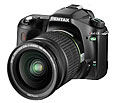Choosing a Camera
For the R/C modeller who wants to take pictures of his/her models, there is a bewildering choice of cameras these days. Fortunately they fall into just three main categories: point-and-shoot (p&s), digital SLRs, and 'bridge' cameras. Let's take a quick look at the pros and cons of each, for the purpose of photographing R/C soarers.Point and shoot (P&S). P&S cameras are adequate for shots of people and static shots of planes. They are less suitable for shots of models in flight, because of greater viewfinder and shutter lag. They also tend to have poor noise performance at the higher ISO (sensitivity) settings which we use to freeze action.
 Digital SLR. For photographing models in flight, a dSLR is undoubtedly the best choice. Advantages are: less shutter lag, better viewfinder, lower noise, greater dynamic range, and interchangeable lenses. And because of their larger sensor size, it's easier to get those nice out-of-focus backgrounds. The downside is their greater cost and bulk, and their tendency to attract dust to the sensor. If dust is an issue, then a special cleaning kit and brushes will be needed.
Digital SLR. For photographing models in flight, a dSLR is undoubtedly the best choice. Advantages are: less shutter lag, better viewfinder, lower noise, greater dynamic range, and interchangeable lenses. And because of their larger sensor size, it's easier to get those nice out-of-focus backgrounds. The downside is their greater cost and bulk, and their tendency to attract dust to the sensor. If dust is an issue, then a special cleaning kit and brushes will be needed.
Bridge Cameras. 'bridge' cameras (e.g. Panasonic FZ30) are either a reasonable compromise or the worst of both worlds, depending on your point of view. They look superficially like dSLRs, but they use electronic viewfinders (EVF), non-interchangeable lenses, and have inferior noise performance. They are also less responsive. The main advantage over dSLR's is that they are relatively impervious to dust, and cost less.
More Megapixels = More Noise (usually)
Whether you go for a p&s or dSLR, forget the marketing hype - six megapixels is more than adequate for printing on A4.
Beware there is often a trade off between megapixels and noise performance. Noise shows itself as flecks of colour blue skies and, 'graininess' in shadows. It is generally worse with p&s and bridge cameras and best on dSLR's. It gets worse as you increase the ISO setting, and we often need high ISO settings to freeze action. Many 8MP P&S and bridge cameras have really quite poor noise performance at ISO 400 settings.
dSLR's offer much lower noise because of the larger sensors used. Even shooting at ISO 800 is quite practical. Here's a shot from my Pentax, taken at a whopping ISO 3200 (yes, I forgot to reset the ISO setting from the previous session!). Noise is evident under the wing, however the fact that it is usable at all is a testament to the sensor.
[Back to Photo Technique]
